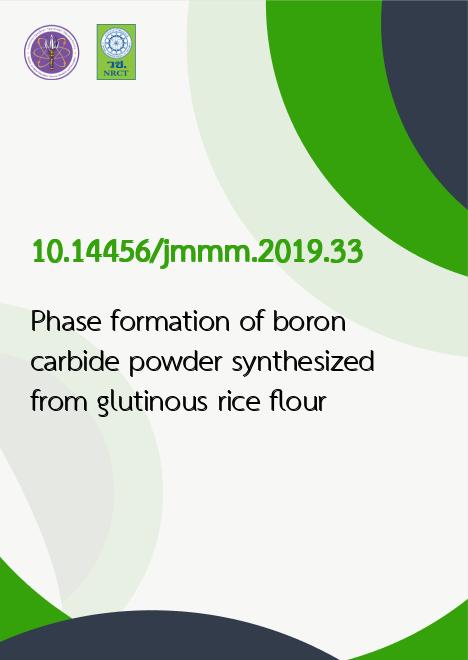
|
Phase formation of boron carbide powder synthesized from glutinous rice flour |
|---|---|
| รหัสดีโอไอ | |
| Creator | Kannigar DATERAKSA |
| Title | Phase formation of boron carbide powder synthesized from glutinous rice flour |
| Contributor | Sujarinee SINCHAI |
| Publisher | Metallurgy and Materials Science Research Institute Chulalongkorn University |
| Publication Year | 2562 |
| Journal Title | Journal of Metals Materials and Minerals |
| Journal Vol. | 29 |
| Journal No. | 3 |
| Page no. | 48-53 |
| Keyword | Boric acid, Glutinous rice flour, Phase formation, Boron carbide |
| URL Website | http://ojs.materialsconnex.com/index.php/jmmm/article/view/482 |
| Website title | Phase formation of boron carbide powder synthesized from glutinous rice flour | Dateraksa | Journal of Metals, Materials and Minerals |
| ISSN | 8576149 |
| Abstract | Boron carbide is an attractive material because of its very high hardness and low density. A number of synthesis processes to produce various forms of boron carbide powders have been reported. In this study, the feasibility of boron carbide synthesis using an inexpensive carbon source, glutinous rice flour, was investigated. Boric acid and glutinous rice flour with the molar ratios, ranging from 2:1 to 4:1, were homogeneously mixed with deionized water at 80?C. The mixtures were dried and pyrolyzed at 700?C for 2 h in air. The phase present and the carbon: boron oxide molar ratio of the pyrolyzed precursor were determined in order to control boron and carbon contents for the synthesis process. The precursor was synthesized under an Ar flow in a tube furnace at 1350?C - 1450?C for 1, 3 and 5 h. Phase analysis, chemical bonding and morphology of the synthesized powder were identified by X-ray diffraction, Fourier-transform infrared spectroscopy and scanning electron microscopy, respectively. It was found that formation of B4C as a major phase was observed at 1450?C, though unreacted B2O3 and carbon still persisted in the final product. In addition, the composition with large number of hydroxyl group showed the B4C phase formation at lower temperature and shorter soaking time. |
